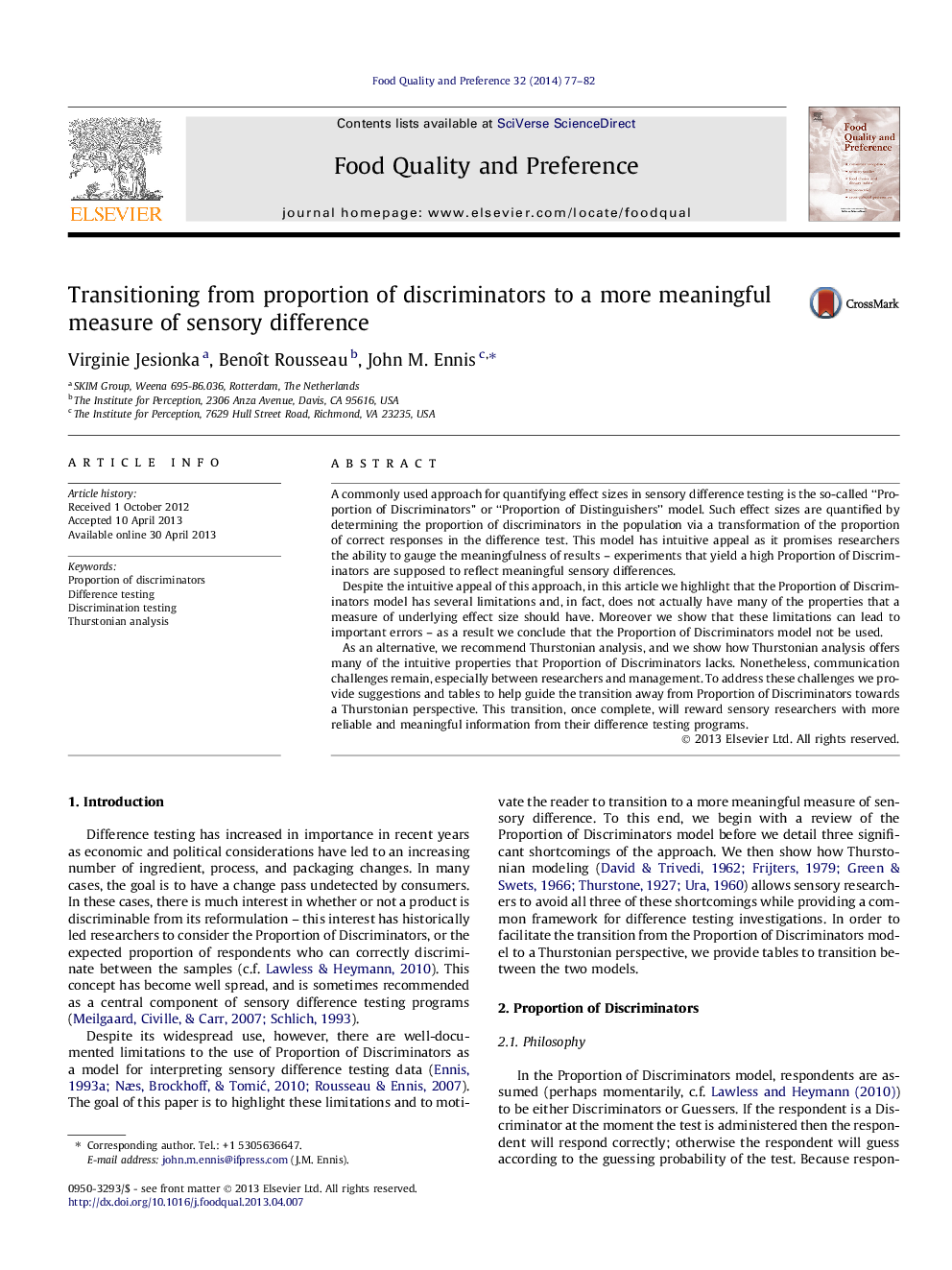| Article ID | Journal | Published Year | Pages | File Type |
|---|---|---|---|---|
| 4317171 | Food Quality and Preference | 2014 | 6 Pages |
•The limitations of the Proportion of Discriminators model are highlighted.•The need for a meaningful approach to sensory effect size estimation is underscored.•Tables are provided to guide the transition to Thurstonian sensory effect size estimation.
A commonly used approach for quantifying effect sizes in sensory difference testing is the so-called “Proportion of Discriminators” or “Proportion of Distinguishers” model. Such effect sizes are quantified by determining the proportion of discriminators in the population via a transformation of the proportion of correct responses in the difference test. This model has intuitive appeal as it promises researchers the ability to gauge the meaningfulness of results – experiments that yield a high Proportion of Discriminators are supposed to reflect meaningful sensory differences.Despite the intuitive appeal of this approach, in this article we highlight that the Proportion of Discriminators model has several limitations and, in fact, does not actually have many of the properties that a measure of underlying effect size should have. Moreover we show that these limitations can lead to important errors – as a result we conclude that the Proportion of Discriminators model not be used.As an alternative, we recommend Thurstonian analysis, and we show how Thurstonian analysis offers many of the intuitive properties that Proportion of Discriminators lacks. Nonetheless, communication challenges remain, especially between researchers and management. To address these challenges we provide suggestions and tables to help guide the transition away from Proportion of Discriminators towards a Thurstonian perspective. This transition, once complete, will reward sensory researchers with more reliable and meaningful information from their difference testing programs.
